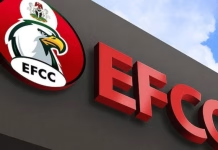As the interest rate hike shifted investors’ attitudes toward Nigerian government bonds, the benchmark yield increased due to prolonged selloffs at the short, belly, and longer ends of the curve.
In the secondary market for Federal Government of Nigeria (FGN) bonds, negative trading activity resulted in a 0.25% increase in the average yield, bringing it to 19.09%.
The monetary authority raised interest rates to 27.25% last month, bolstering market expectations of a higher return on investment. Since the start of the monetary policy committee’s rate hike cycle, the fixed income market has been the favorite destination for investors looking to capitalise on rates’ appeal.
Institutional investors, Pension Fund Administrators (PFAs) and other asset managers remained core players with elevated yield.
Even at that, investor funds are still exposed to inflation negatively, and analysts predict it is unlikely to see the gap close as the Debt Management Office keeps rates subdued to reduce pressure on federal government debt service costs.
Yields expanded at the short (+41 bps), mid (+17 bps), and long (+13 bps) segments, with notable activity around the 28s and 29s. As a result, the average yield rose by 25 bps to settle at 19.09%.
The yield curve was shifted due to profit-taking activities on the APR-2029 (+128bps), JUL-2030 (+41bps), and JUN-2038 (+85bps) bonds, respectively.
With the recent 50 basis points increase in the benchmark interest rate, fixed interest rates are expected to stay elevated, maintaining investor interest.
However, liquidity remains a key driver of yield direction, and analysts anticipate it will continue to shape market activities.













